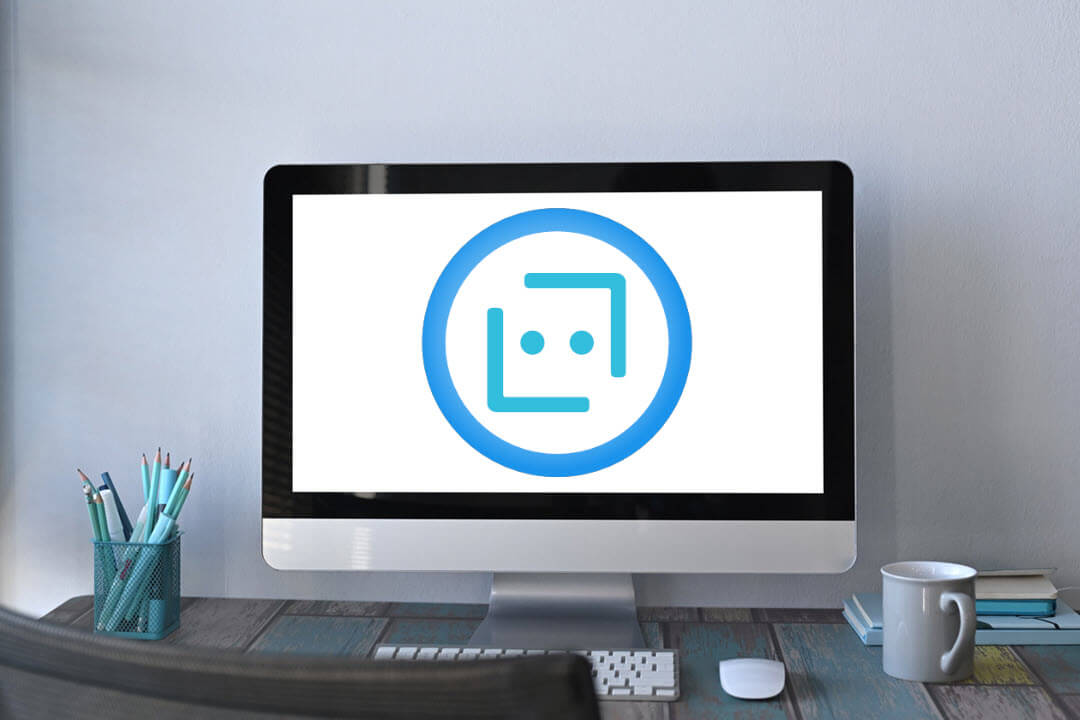Power Virtual Agent vs Azure Bot Service is the latest rendition of the bot wars, with giant tech companies tripping over each other for the coveted honor of building your next chatbot.
It’s not easy for the customer either. Decisiveness can be elusive when bombarded with many similar (yet so different options), misleading marketing, and conflicting information.
This piece seeks to demystify Power Virtual Agent vs Azure Bot Service, bring their similarities to light, and put their differences in context.
It will cover the two largest bot-building platforms from Microsoft, their comparison, their contrasts, and everything in between.
What is Microsoft Power Virtual Agent?
Microsoft Power Virtual Agent (PVA) is a Microsoft platform for no-code and citizen development of powerful bots.
It offers a low-code platform for Building AI-driven chatbots which puts conversational AI, automated customer service, and intelligent virtual assistants within reach for many businesses.
It also bridges the gap between your “low code developers” and “pro-code developers,” further expediting your bot building process.
Top Microsoft Power Virtual Agent Features
In addition to the benefits of low code development, some of the distinguishing features that have propelled PVA to the top of the bot development discussion include:
Integrations Galore
Something that you’ll appreciate about Microsoft PVA is just how easy it is to integrate with the larger Power Platform and Office 365.
With Power Platform functionality (such as Power BI), you can access insights, analytics, and metrics that will usher you into an era of data-driven decision-making.
There are also dozens of third-party prebuilt connectors that allow you to deploy your chatbot on your website, social media, or Microsoft teams.
Allows Input From a Subject Matter Expert
Microsoft PVA does not leave you no-code citizen developers hanging. On the contrary, its authoring canvas design enables input from subject matter experts, bridging the gap between your pro code and low code teams.
It also creates an enabling environment for gradual learning and iterative improvement for your citizen developers.
Rapid Low-Code Development
Microsoft PVA’s no-code development is its distinguishing feature and most prominent selling point. With this platform, you no longer need teams of software engineers or hefty developer budgets to develop a simple bot for your HR department.
This feature comes with cost savings, rapid app development, and room for experimentation with potential use cases of chatbots in your business.
Automation with Microsoft Power Automate
Since Power Virtual Agent is under the umbrella of Microsoft’s Power platform, there are a lot of integrations, shared utilities, and functional overlaps between PVA, Power BI, and Power Automate.
One of the most ground-breaking is the automation of Power Automate flows with Power Virtual Agent.
Hence If your firm operates with a lot of Power Automate flows, a power virtual agent bot may come in handy for getting user feedback and gathering information.
What is Azure Bot Service?
Azure Bot Service is a dedicated integrated environment for your entire bot development life cycle. It is Microsoft’s replacement for the Bot Framework, which has been around for a while.
As a one-stop shop, Azure Bot Service enables you to build, connect, test, and deploy your bots without having to hop from one platform to another or rely on feeble integrations.
Unlike Microsoft PVA, the Azure Bot service is 100% code-based development. Hence, the bots you’ll build on Azure Bot Service will be made with languages such as Node.js, Python, JavaScript, and C#.
Although this may be a turn-off to some people, it is ideal for companies with established developer proficiencies.
Top Azure Bot Service Features
Some of the features that make Azure Bot Service a real contender in the bot wars include:
Developer Templates
Most developers would want to write as little code as possible on the fringes and focus their skills on more business-critical coding.
Azure Bot Service makes this a possibility with bot templates. These are pre-developed frameworks of already created bots that you can use as a foundation for your intelligent enterprise-grade bot
Scalability
One of Azure Bot Services’ most prominent selling points is how efficient it makes it in scaling your project. This is thanks to its API-driven framework.
Once you build your bot on the Bot Framework SDK, you can use RESTful APIs to deploy it across various applications. This is without writing additional code or understanding the nuances of API connections.
These apps include and aren’t limited to Skype for Business, Microsoft Teams, Twilio, Slack, Email, and several other endpoints.
Integrations
Azure Bot Service has seamless integrations with some of the most imperative platforms in bot development via REST- APIs.
Through Azure Cognitive Services, you can build cognizant bots that can percept language, QnA marker, Speech, Search, and Vision via various integrations such as LUIS and QnA Maker.
You can also configure your Azure-built intelligent chatbots to run on one or many channels, including Telegram, Kik, and WeChat.
Multilingual-Support
Azure Bot Service supports more than 18 different languages. This means that building bots that transcend borders, cultures, and nationalities are no longer a distant dream. With Azure, it is here, now.
How Are Power Virtual Agents and Azure Bot Services Similiar?
Microsoft PVA and Azure Bot Service are just different sides of the same coin. Even though they cater to varying aspects of bot development, they still have much in common.
Azure Bot Service and Power Virtual Agent share:
- A parent company (Microsoft)
- A long list of integrations and cross-functionalities (such as LUIS)
- They both offer the same level of functionality
How Are Power Virtual Agents and Azure Bot Services Different?
Despite the apparent similarities, Azure Bot Service and Microsoft Azure couldn’t be more different. They were created for different use cases, meet peculiar buyer needs, and build bots in distinct ways.
Here is a comprehensive review of the differences:
Framework vs Platform
Azure Bot Service is considered a framework for building internal and customer-facing bots. Technically, it is a replacement for Microsoft’s Bot framework, on which it creates all your bots.
Power Virtual Agent isn’t a framework (or pathway to a framework) like Azure Bot Service but a separate platform for rapid and agile low code development.
Different Parts of the Microsoft Stack
Azure Bot Service is part of Microsofts Azure cloud services and has close and seamless integrations with the cloud-migration side of Microsoft’s tech stack.
Azure Bot Service, a cloud service, and its subsequent integrations are an excellent place to springboard your services, customer engagement, and outreach to the cloud.
On the other hand, Power Virtual Agent is part of Microsoft’s citizen developer vision for the Microsoft Power platform. It integrates seamlessly with the Power triage (BI, Automate, and Apps), allowing you to create robust, automated, and data-driven solutions.
Pricing
The Azure Bot Service, the channel-based pricing model, wins hands down, and it’s not even close. Besides offering a free trial version, it also makes its standard channels free of charge.
The premium channels are free for the first 10,000 messages, after which Azure Bot Service will charge you $0.50 per 1,000 messages.
The Microsoft PVA pricing plan will set you back $1,000 monthly for up to 2,000 agents (chatbot sessions). If you surpass this number of sessions, you can get add-ons for a further 1000 sessions at $450 a month.
Integrations
Azure Bot Service doesn’t integrate with Microsoft Power Apps but integrates with Azure Cognitive Search, Cognigy. AI, apps, Facebook Messenger, KIK Cortana, Microsoft 365, and Microsoft Azure.
Conversely, Microsoft PVA integrates with Microsoft Power Apps in addition to seamless integrations with other third-party applications on which you can run your chatbot.
100% vs 0% Code Development
Microsoft PVA is 0% code. It uses a no-code graphical interface to bring bots to life with little to no code.
On the other hand, the Azure Bot service is a 100% code-based platform. Here, you have to use coding languages to build your bot.
However, this has its fair share of advantages, including more functionality and customizability in your bot creation.
The closest you can come to code-less development in Azure Bot Service is the ready-made templates that can help boost productivity and save time.
Language Support
Currently, Azure Bot Service supports 18 languages, whereas Microsofts PVA supports six languages (English, French, German, Portuguese, Spanish, and Chinese).
Power Virtual Agent vs Azure Bot Service, Which Should I Choose and Why?
As you’ve seen, Azure Bot Service and Power Virtual Agent are potent tools for building intelligent Bots.
However, each has its strengths and weaknesses that may be relevant to you at different points of your development lifecycle. So what gives?
Your platform choice will come down to the unique circumstances under which you’re developing your bot. These include:
Your Developers
One of the most crucial determiners of the platform you end up going with is your available developers for the project.
Are you working with an IT department or seasoned coders with years of experience and competencies? If so, you’re better off building your bots with Azure Bot Service.
On the other end of the spectrum, you could be a non-IT business developing a bot with novice developers still learning to code. Going the power virtual agent route should be considered in such an instance.
Time Constraints
The amount of time or urgency your business requires a bot should also play a role in your decision-making.
If you’re under a looming TTM deadline, then you’re better off with Power Virtual Agent due to its agile and rapid app development environment.
Consequently, if you have all the time in the world and have no hurry bringing a bot to the market, you can go with the slow but sure Azure Bot Service route.
Budgetary Constraints
Regarding budget, it’s evident that Azure Bot Service is the cheaper option. With most of its standard channels being free, this can be tempting.
However, it’s crucial to put this into the context of recurring payments and the cost of hiring developers. If you’re running a brief one-time project, you may consider paying for PVA since you will only be doing it once.
On the other hand, if you’re making recurring payments, Azure Bot Service is more affordable. But before you jump on to the Azure bandwagon, note that the free channels only support a maximum of 3 data sources.
Nature of the Project
The type of bot you’re building will also go a long way in determining the platform that you will choose. Are you building a complete functional bot, prototype, or proof of concept?
If the bot you’re building is the production version, a low-code platform may lack some of the functionality and customizability to meet the user requirements. Hence, you should consider going for Azure Bot Services since it leaves the coding to your developers.
On the other end of the spectrum, Power Virtual Agent may come in handy for patching together a quick prototype and proof of concept version of your bot.
Long-term Maintenance
Long-term maintenance is another crucial yet often overlooked factor in bot development. Low code is not the way to go if your bot is a long-term project requiring constant maintenance.
This is because low-code development always faces challenges post-development regarding updating and maintaining the apps.
For Azure Bot Services, however, the developers who built your bot can always manipulate the source code from time to time, helping with maintenance.
Can I Use Both Power Virtual Agents and Azure Bot Services?
The short answer is yes.
Inquiring which of two platforms one should use is asking the wrong question. A better one would be when should I use either, or when can I use both?
You can use Microsoft PVA and Azure Bot Services to develop your bot and gain the best of both worlds.
For instance, you can use Power Virtual Apps to come up with your prototype and then develop your production version using Azure Bot Services. The opportunities are endless.
Power Virtual Agent vs Azure Bot Service, Where to go from here?
Seeing the tremendous growth these platforms are seeing, this won’t be the last time you read or hear about Azure Cloud Services and Power Virtual Agent.
That said, you need a consistent and reliable source of truth to keep up with all things Microsoft and the Microsoft Power Platform.
Look no further than our collection of informative pieces available at our IncWorx blog for valuable insights, expert opinions, and actionable advice.
For further advice, you can set up a call with us today, and our team will be more than willing to help.





